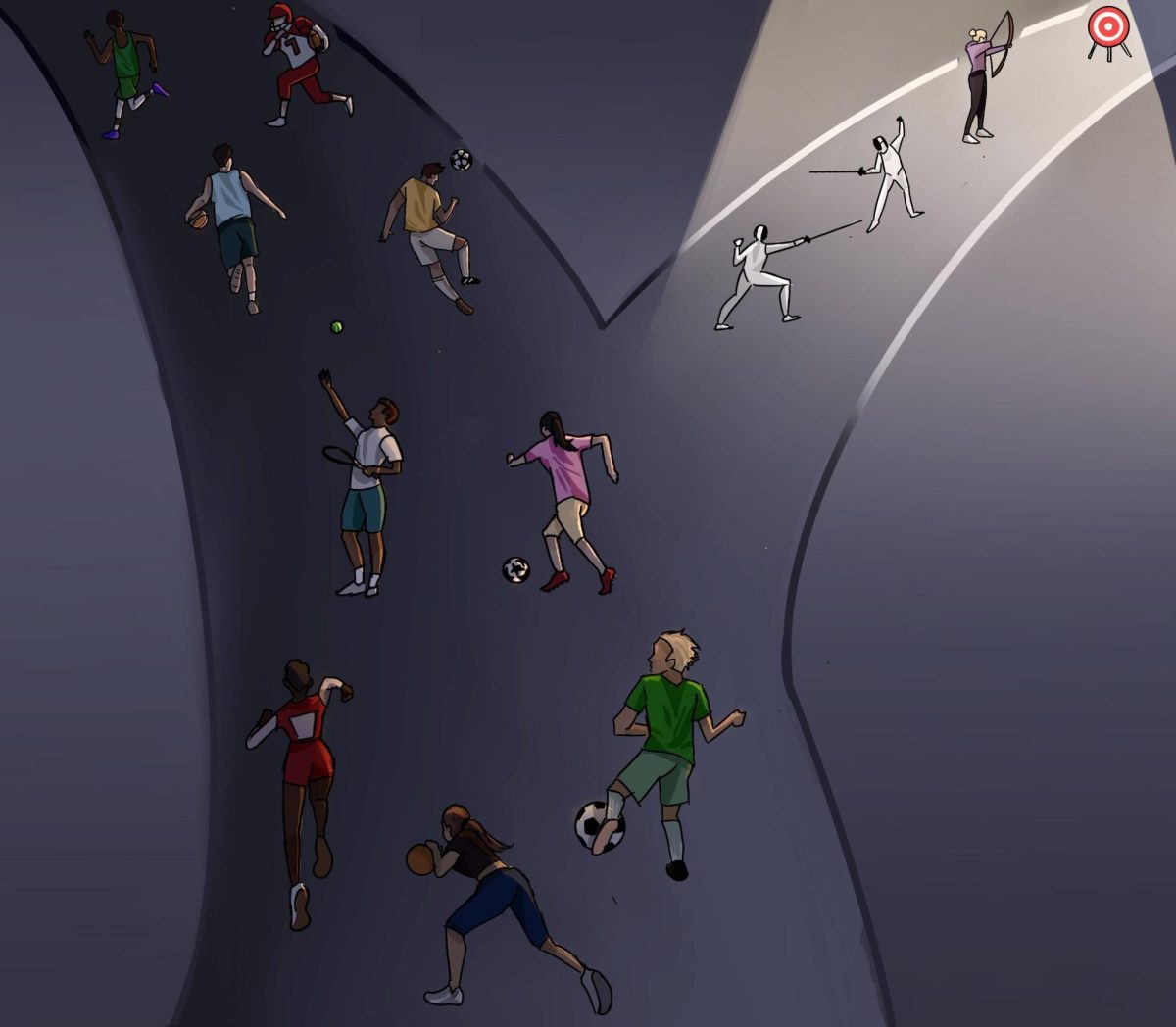It’s Friday night, the stadium buzzes with excitement, and the bleachers are jam-packed with students cheering on the football team. The crowd’s roar reverberates through the gridiron as much as the spotlights illuminate it. But on the other, quieter side of the school, fencers and rowers work diligently into the night.
Athletes in niche sports are often not only fiercely competing for victory but also for coveted spots on college recruitment lists.
Niche sports aren’t widely popular, but could provide students with opportunities to bolster their ultimate goal: college applications.
Pinewood freshman Eddie Ling has been a competitive fencer since the age of 7 and currently ranks sixth in the nation for 16 year olds. He represented Team USA at the Cadet Circuit, a series of tournaments for fencers in the cadet age group held in Bulgaria, Slovakia and France, and won gold against teams across Europe.
“At first, I didn’t really think about fencing in college or getting recruited by a prestigious university,” Ling said. “I fenced because I loved the sport.”
But Ling said he later realized his passion for fencing offered a unique path to college recruitment compared to more mainstream sports. Learning how to deftly attack with an épée might get a student admitted into one of the 46 universities across the country that offer fencing.
Similar to Ling, for many talented high school athletes, college placement is the ultimate goal, the clutch play.
“As I got better, the idea of college recruitment piqued my interest,” Ling said. “My potential to attend a top university suddenly became more realistic.”
And Ling said niche sports like fencing pave a unique path to college recruitment compared to more mainstream sports.
“Since fencing is not common, there are fewer competitors at a high level which makes standing out from the crowd much easier,” Ling said. “The best universities have great fencing programs, so being recruited to one of those schools is now my priority.”
Sophomore Madalena Buxton can relate. She said she hopes to follow the footsteps of her two older sisters, one who rowed at UCLA and the other at Boston University. Seeing how rowing steered her siblings toward success, Buxton said she rows competitively knowing it could add muscle to her 2027 college applications.
“The admissions boost that comes with crew played a big part in my motivation to row,” Buxton said.
But unlike Ling, Buxton strategically chose to pursue rowing from the beginning. To her, crew is more than a high school sport — it’s an opportunity to distinguish herself in the competitive world of college admissions.
“What’s great about rowing is that even if you start late, like in your sophomore or junior year, you can still pick up this sport if you dedicate yourself to it,” Buxton said. “Show up every day, work your tail off and you can excel in crew.”
Over 150 universities offer NCAA Division 1 rowing, with the average scholarship size for men at more than $14,000 per year, and for women, it exceeds $20,000 annually. The odds of earning a scholarship for fencing are almost three times as high as the odds for basketball players.
Katie Smith, who was a starter for St. Mary’s College’s basketball team, said she knows firsthand the competitive advantage of participating in niche sports.
“The pool of applicants participating in niche sports is much smaller,” Smith said. “The percentage of recruited high school athletes from those sports is higher than students playing in the mainstream.”
But Smith said while the chances of recruitment may be higher, athletic requirements are still challenging.
“Although niche athletes enjoy greater probabilities of playing at the collegiate level, admission standards at top colleges tend to be stricter for those students compared to football or basketball players,” Smith said.
Niche sports might not grab ostentatious headlines, Ling said success isn’t always found on center stage. It can be fostered in the shadows, away from the limelight.
Ling said, “Niche sports can uncover opportunities that you might have never expected.”


